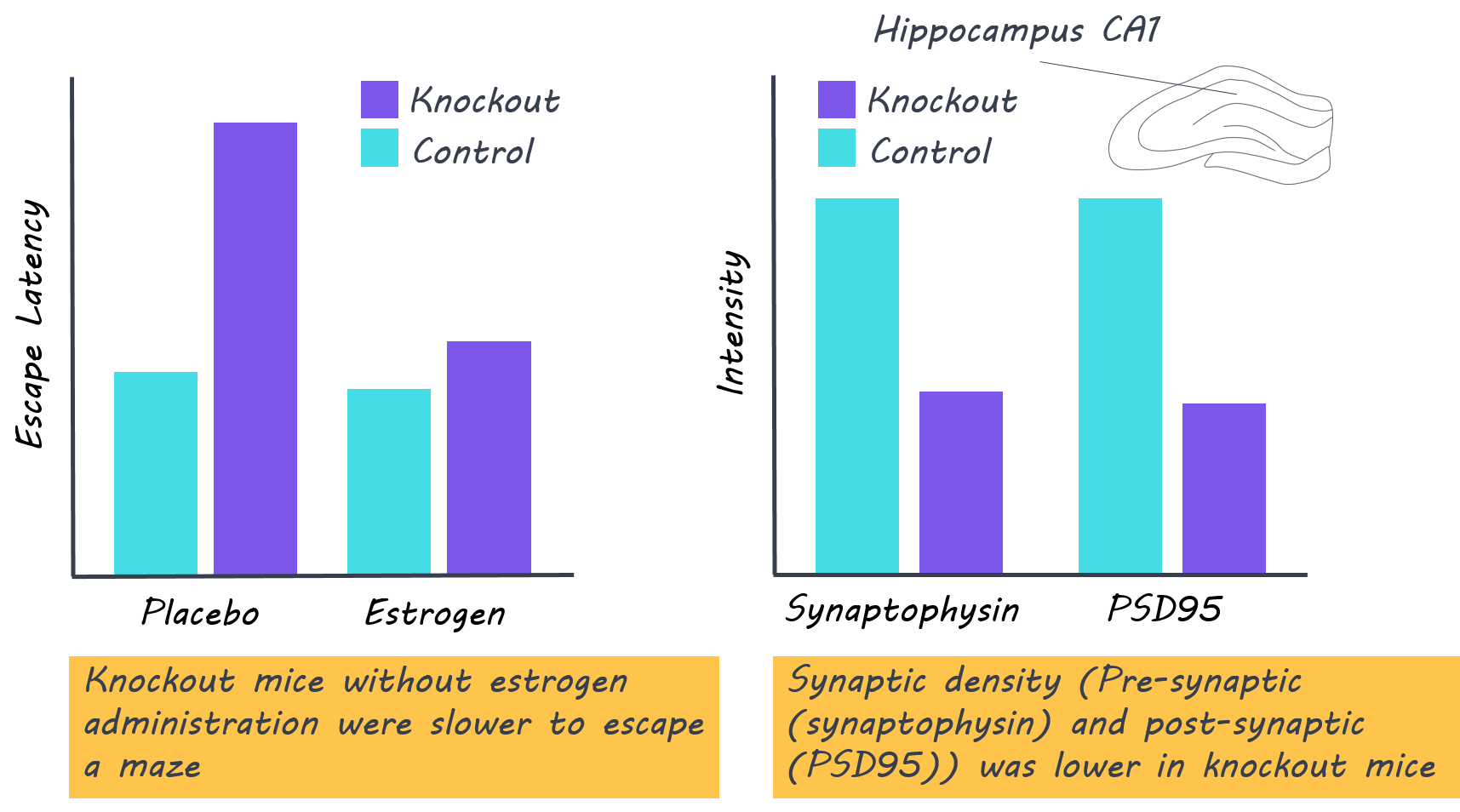Neuron-Derived Estrogen Regulates Plasticity and Memory
Post by Anastasia Sares
What's the science?
Did you know that neurons make estrogen? The enzyme aromatase produces estrogen in the forebrain neurons of mice, specifically memory-related regions like the hippocampus. Aromatase is also present in the human brain, however, until recently its role was unclear. This week in The Journal of Neuroscience, Lu and colleagues developed a line of mice that did not express estrogen in the forebrain (17β-Estradiol, or E2) in order to see how estrogen affects neural development, memory, and behavior.
How did they do it?
The authors first developed transgenic mice by using the CRE-loxP system, a technology used to selectively manipulate genes. CRE is an enzyme that can recombine DNA; it looks for sites on the DNA that match a specific template (loxP sites), and depending on how the loxP sites are oriented it can cut out a gene, reverse it, or move it to a different location in the DNA. The advantage of this system is that it can target genes in specific tissues, which the authors used in this case to knock out the gene for aromatase in forebrain neurons only.
The authors ran a battery of tests on the genetically modified mice, examining brain tissue from the mice with a number of techniques. First they examined tissue lysates by breaking up tissues and examining the amount of different proteins present (using Western blots). They used immunohistochemistry to tag intact slices of tissue with antibodies to see where proteins of interest were located in the tissue. They also used visual analysis to examine tissues under a microscope to see spine density on the dendrites and count the number of synapses. They used electrophysiology techniques to stimulate neurons and observe neurotransmitter release. This can be used to measure memory formation processes like long-term potentiation (LTP).
The authors also performed several behavioral tests with the mice, assessing memory performance, depressive behavior, locomotive behavior (movement) and fear conditioning. Finally, the authors tested what would happen if they administered estrogen to animals whose neurons couldn’t produce it alone.
What did they find?
The results all point to one conclusion: estrogen plays an important role in memory formation, for both males and females. The tissue lysates and immunohistochemistry confirmed that the genetically modified mice were indeed lacking the aromatase enzyme in the forebrain, in areas like the hippocampus. Estrogen production was lowered by 60-75% in these neurons, and this had many effects related to memory: despite normal movement patterns and intact fear responses to conditioned cues, the mice were impaired in memory tasks. Their hippocampal neurons were also less connected (fewer spines and synaptic connections), and the long-term potentiation was less robust. However, the mice recovered when the experimenters administered estrogen, showing a “rescue” effect. Based on the rapid recovery of function and some auxiliary experiments, the authors even proposed a mechanism of action for estrogen (AKT-ERK and CREB BDNF signaling).
What's the impact?
This work indicates that estrogen is involved in memory formation in mice.The authors demonstrated that it is necessary (by knocking it out), and that it is sufficient (by re-administering it for a “rescue” effect). By addressing aromatase and estrogen function at multiple levels, they show how one protein can have an effect on cellular mechanisms, which can, in turn, affect behavior.
Lu et al. Neuron-Derived Estrogen Regulates Synaptic Plasticity and Memory. The Journal of Neuroscience (2019). Access the original scientific publication here.

